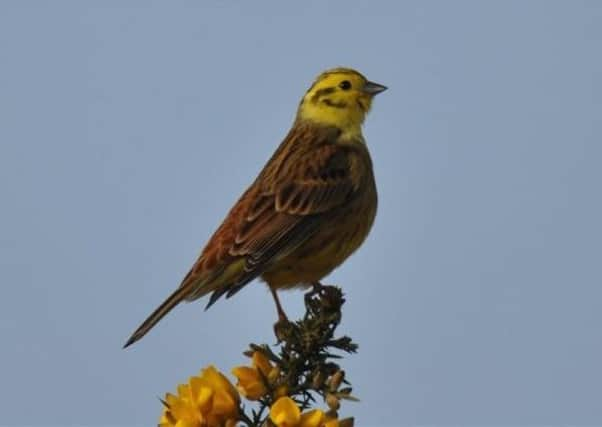Birdwatch: Big flocks of yellow birds are all too rare a treat


But such a big flock; more than 250 at one stage, is a rare sight in the English countryside. The yellowhammer population fell by 54 per cent between 1970-98 and, along with a number of other farmland birds, it is now red listed as a bird of conservation concern.
The main problem is probably a lack of available grass and weed seeds to sustain them during winter because of intensive farming. As a result fewer yellowhammers and other farmland birds survive until spring. They will seek out areas where they can find food including any remaining winter stubble fields, root crops with weeds among them and field margins where grain has been spilt while being fed to livestock.
Advertisement
Hide AdAdvertisement
Hide AdYellowhammers continue to do well where seed is provided on nature reserves or on farmland where seed rich wildlife strips are in place through Higher Level Stewardship. Farmers have also been encouraged to help them by planting perennial ryegrass. This is cut in late May and turned into silage to feed cattle, then grown again until a second cut is taken. Cattle graze what is left. But if at least some of this second crop at field edges is left uncut huge amounts of seed are produced which will last birds through the winter well into March and the RSPB asks farmers to consider doing this.
It is unclear what the impact on farming and the environment will be after Brexit. There have been assurances that Entry and Higher Level Stewardship schemes already in place will continue to be honoured but the long term situation is unknown. Conservation body BirdLife International blames the EU’s Common Agricultural Policy for the huge loss of farmland birds across Europe and perhaps, given greater flexibility, our farmers will be allowed to manage their land in a more environmentally friendly way again.
Sightings this week included a drake and two redhead smew on Hornsea Mere and another redhead at Fairburn Ings while white-fronted, pink footed and tundra bean geese have continued to be found among flocks of greylag and Canada geese across the region - a maximum of 63 were seen in the Wellfield at Spurn and 32 at Ingbirchworth reservoir, South Yorkshire. Eight bean geese were at Alkborough Flats on the Humber.
There were more glaucous and Iceland gulls in roosts while 13 Mediterranean gulls were reported around the Holbeck Hall car park on Scarborough’s South Cliff.
Advertisement
Hide AdAdvertisement
Hide AdTwo Siberian chiffchaffs were seen in riverside willows at the St Aidan’s reserve, Leeds while another ‘possible’ was reported at the Carr Lane sewage farm, South Yorkshire.
There are still plenty of waxwings present across Yorkshire with some sizeable flocks or 80 or more in Sheffield and several colour ringed individuals reported.